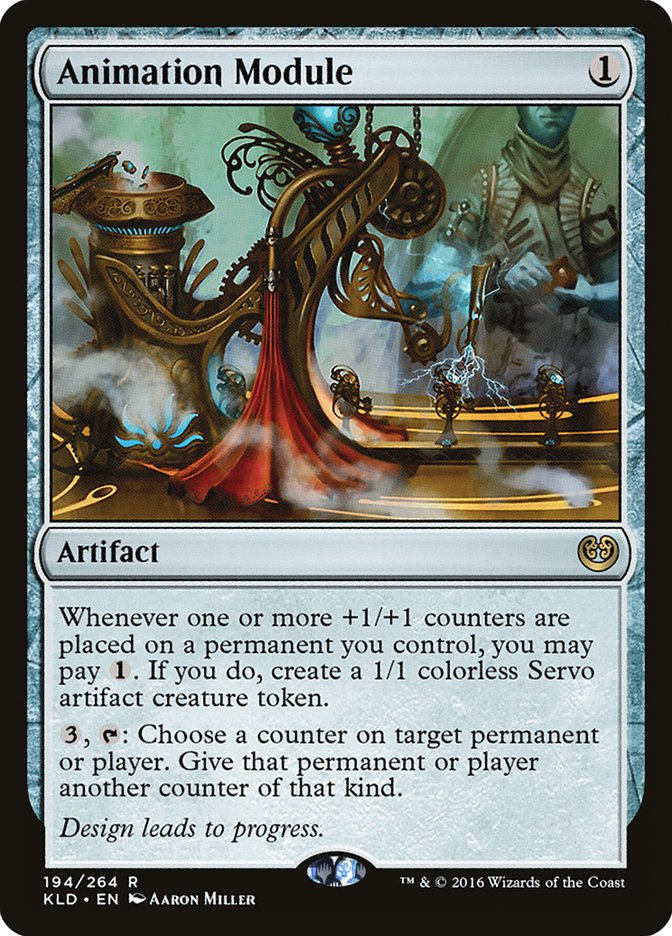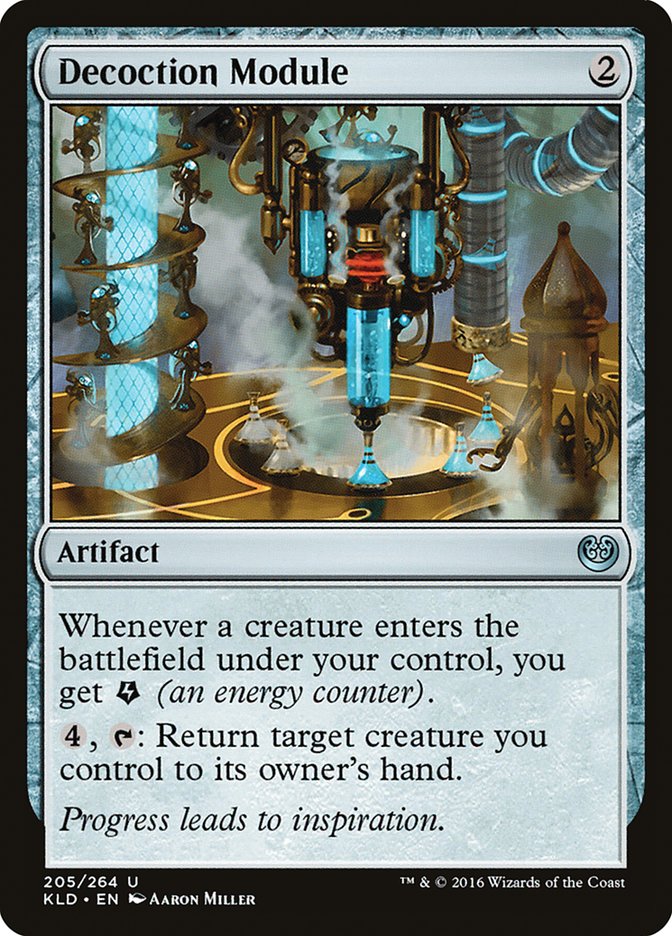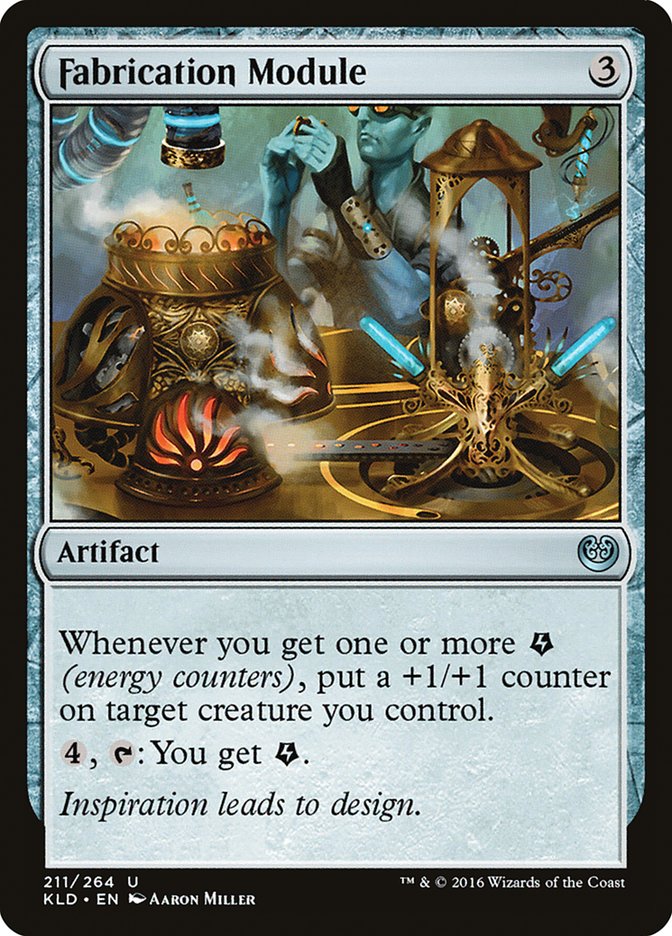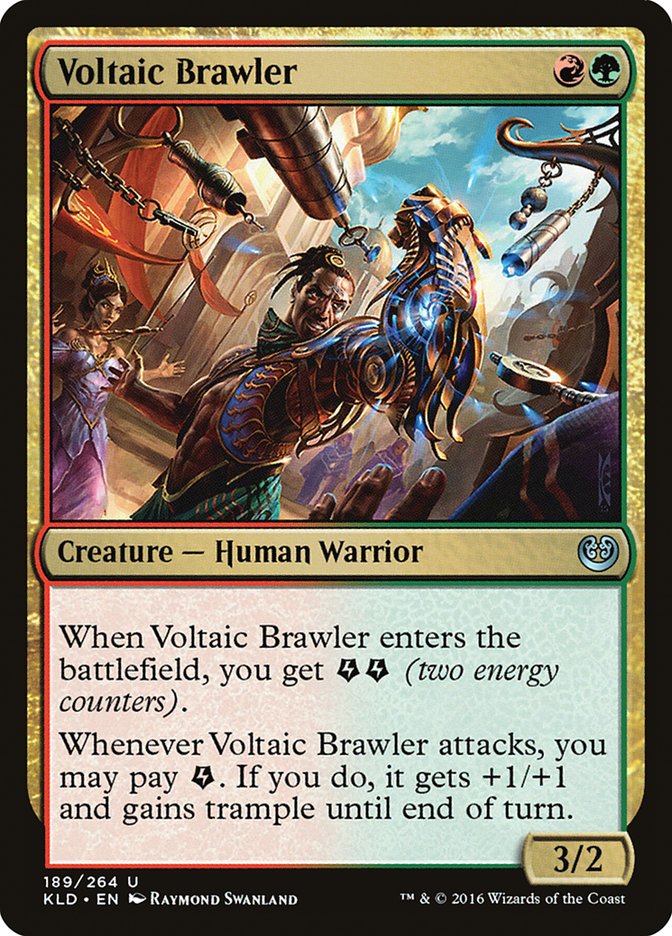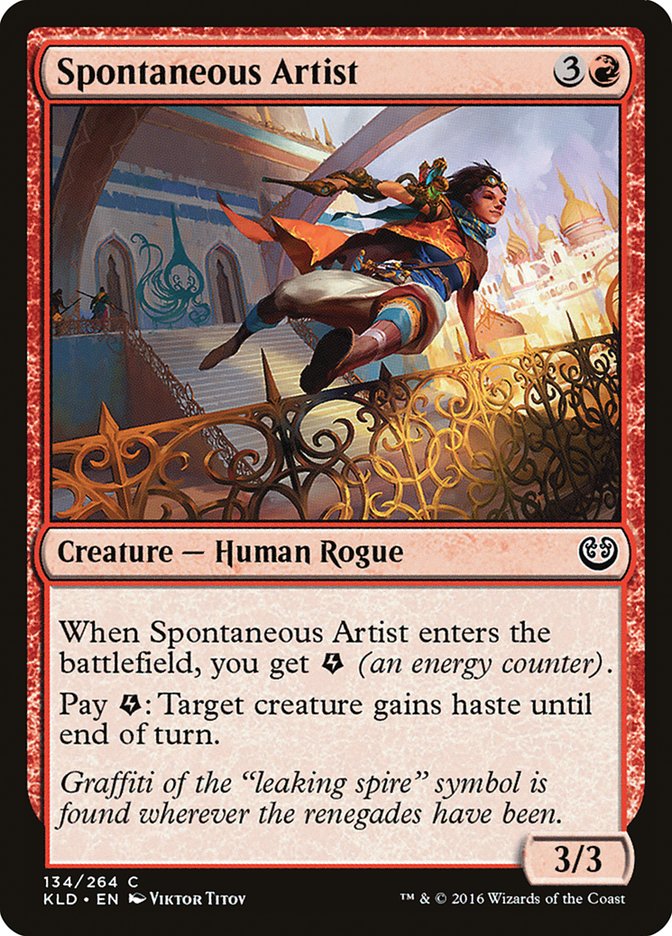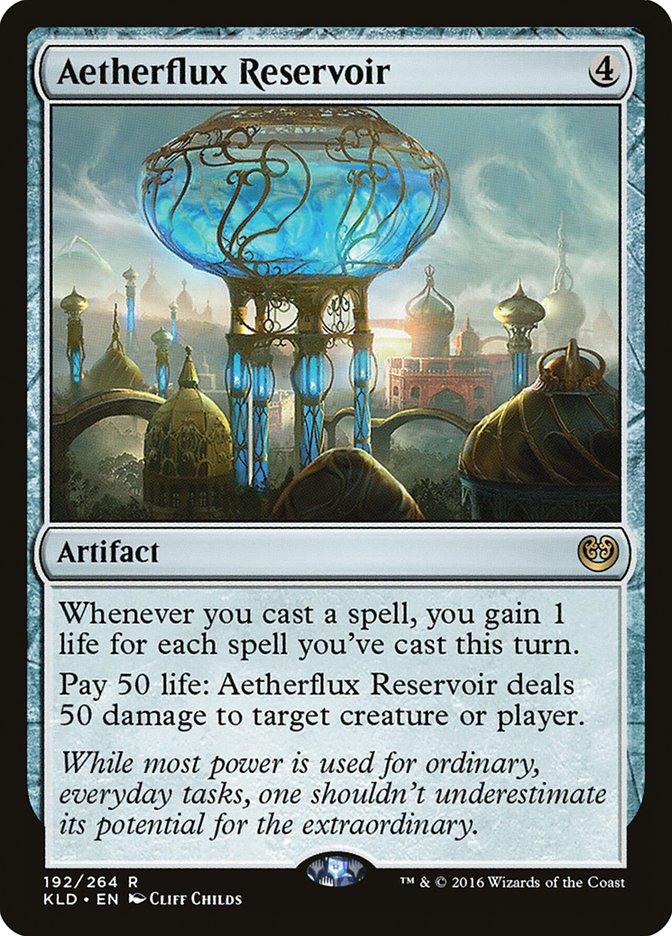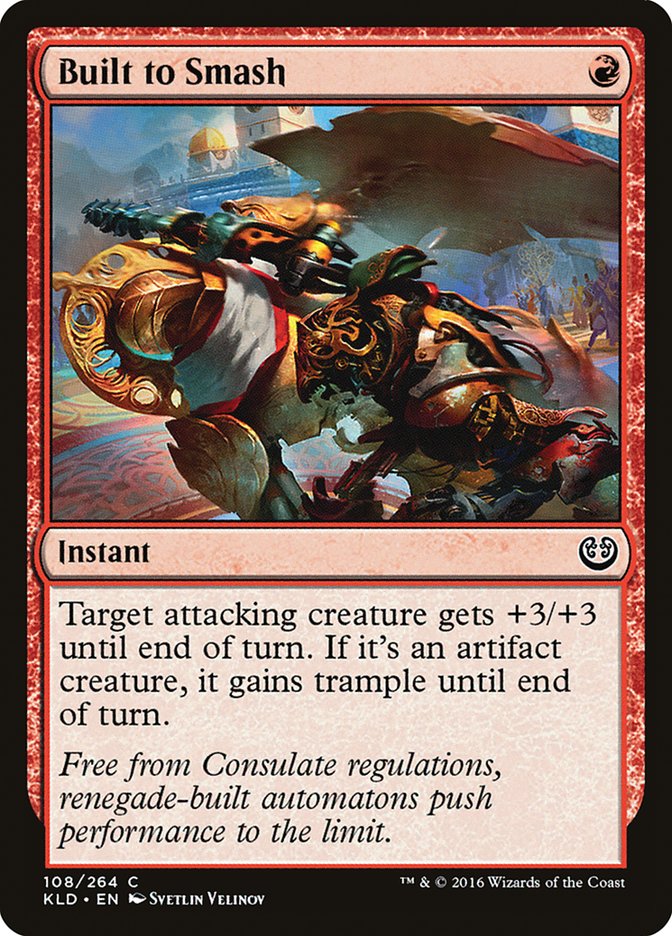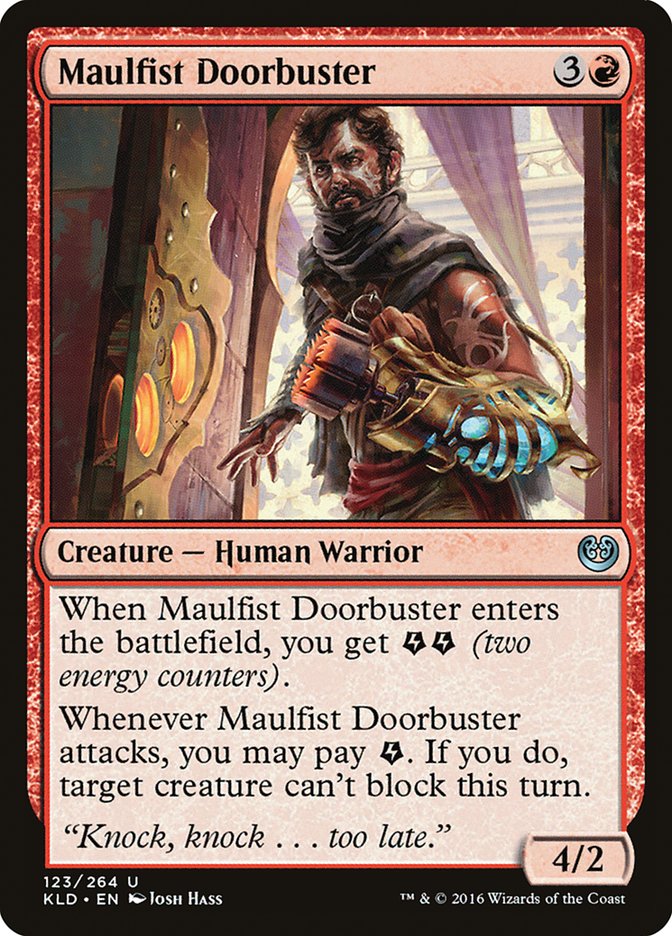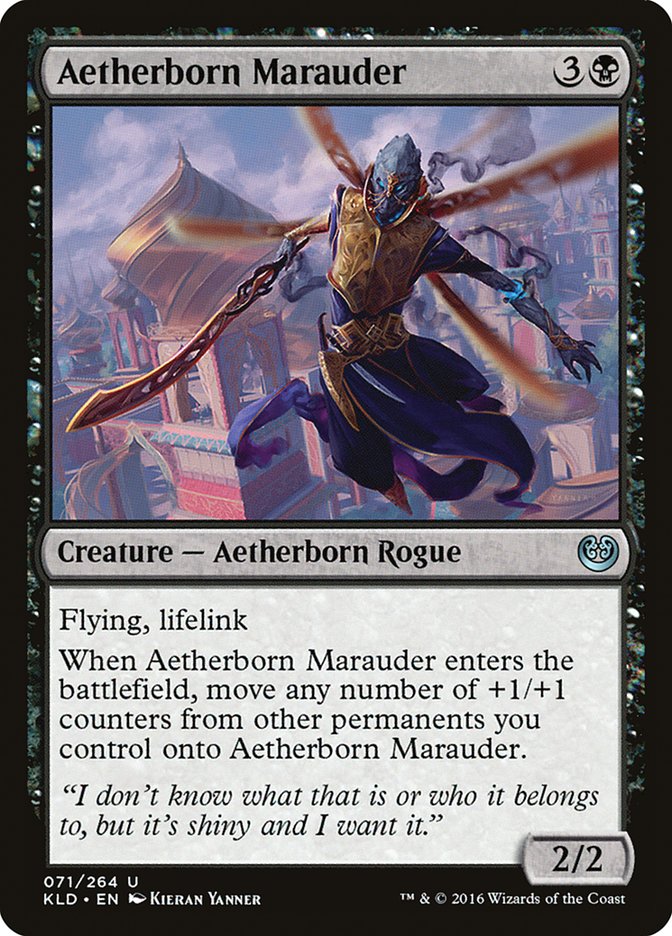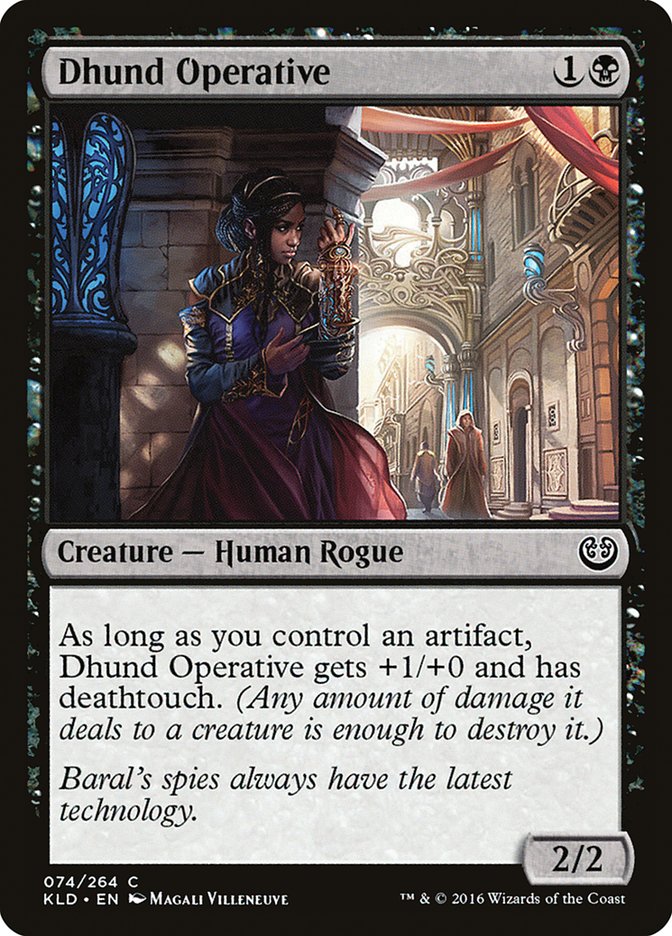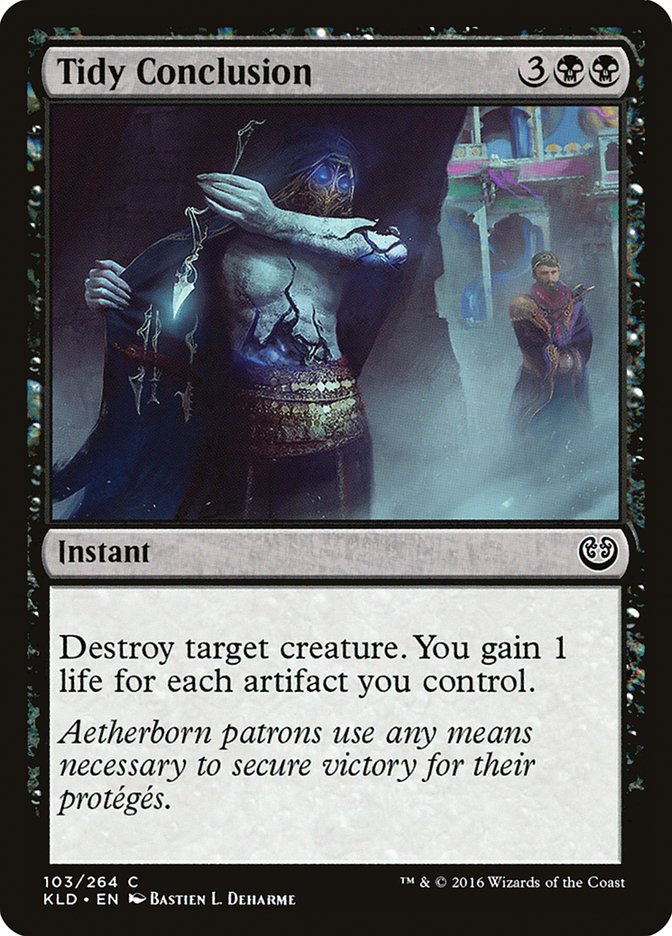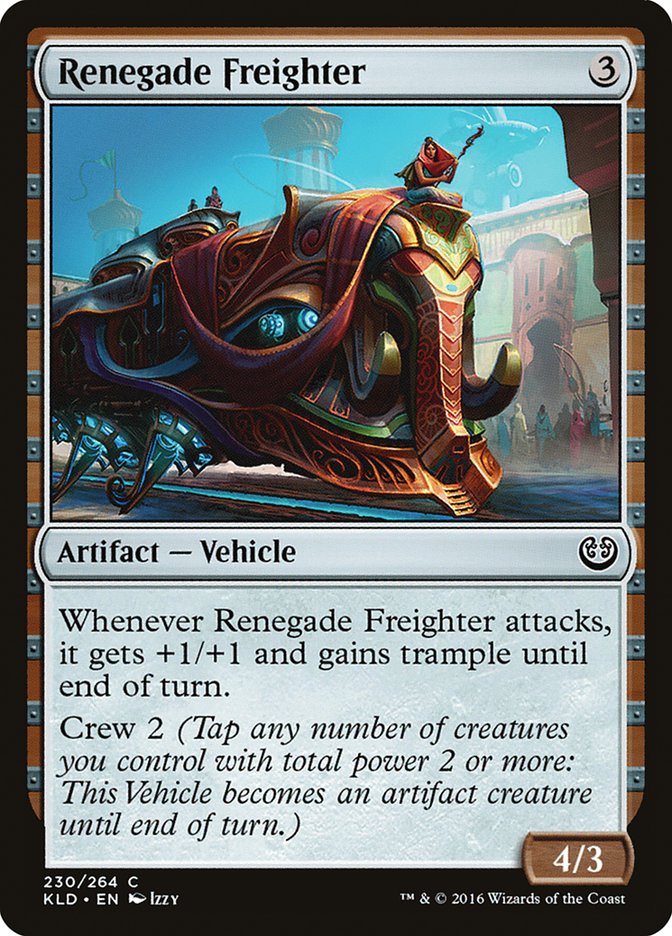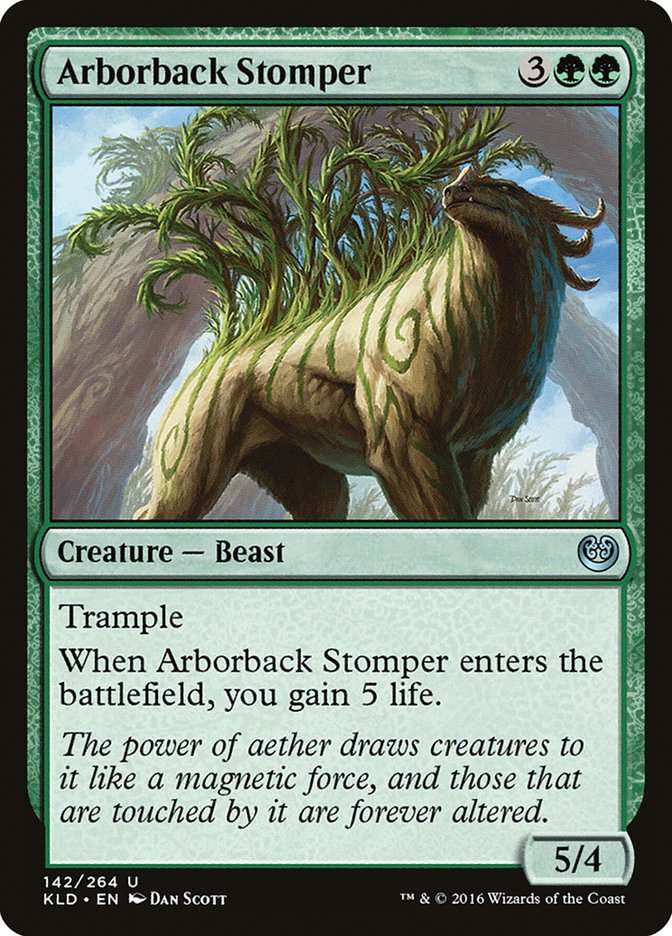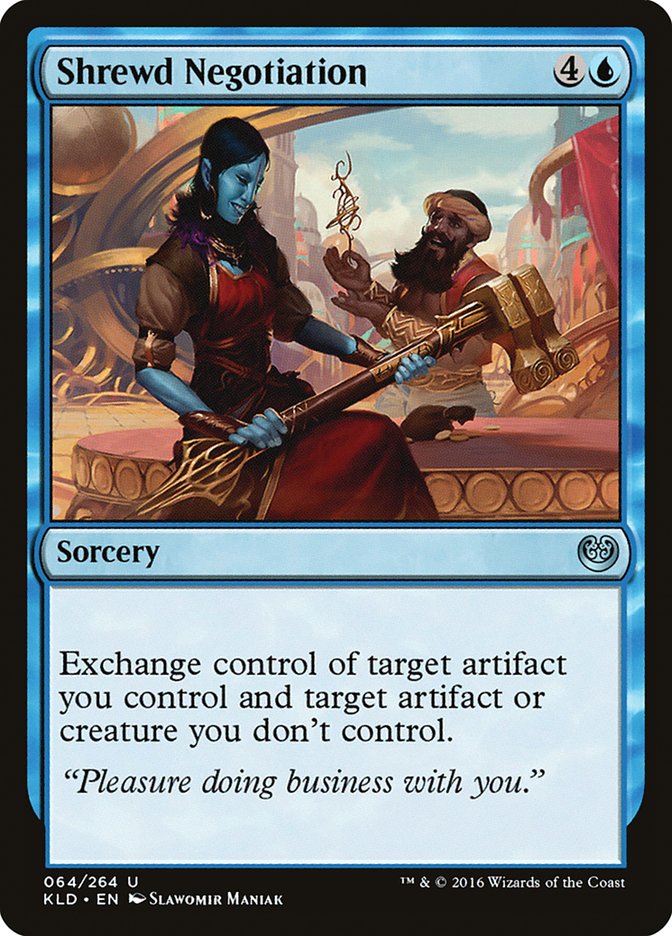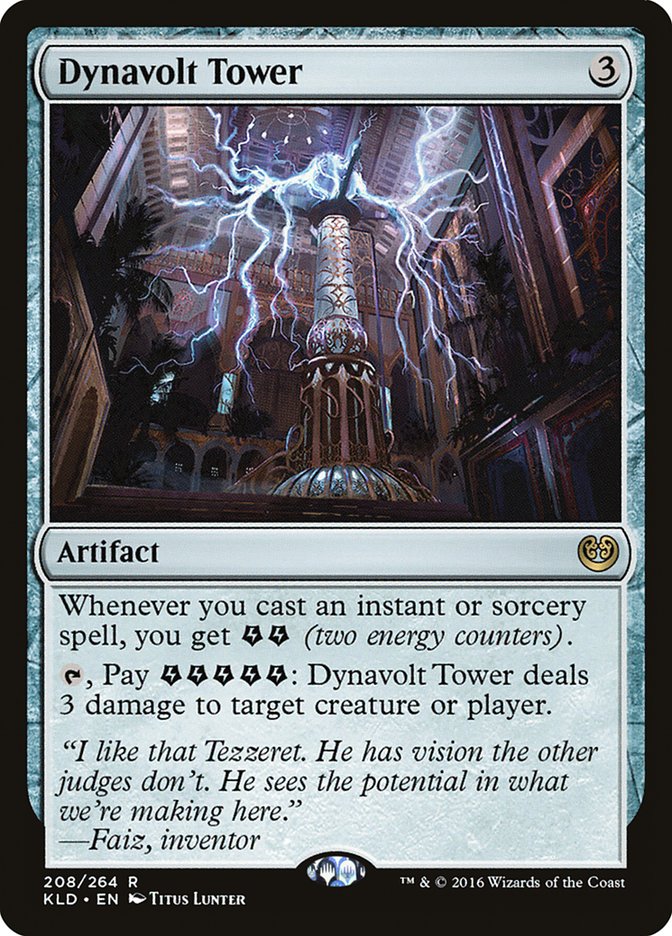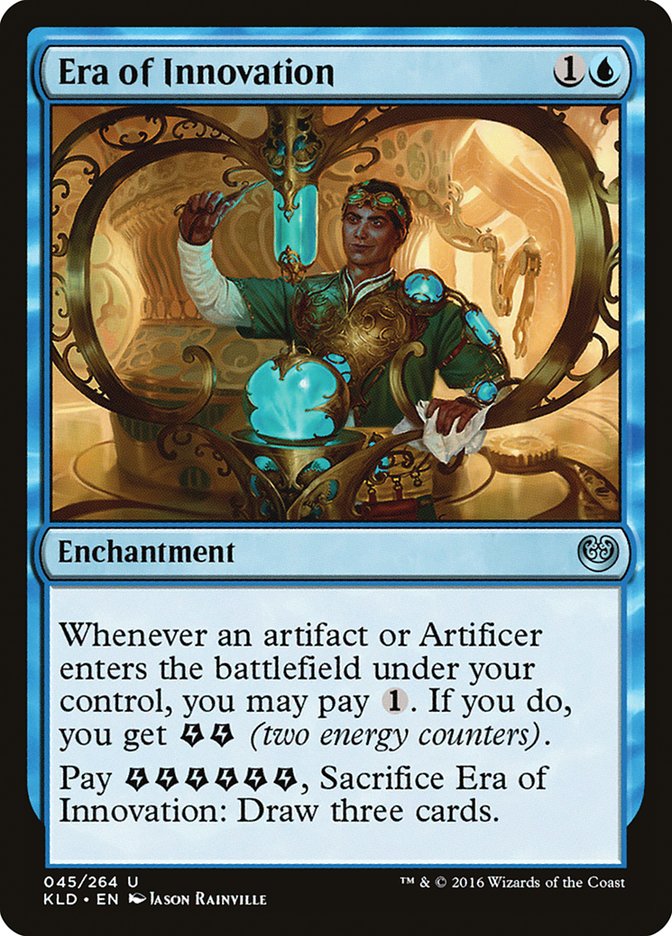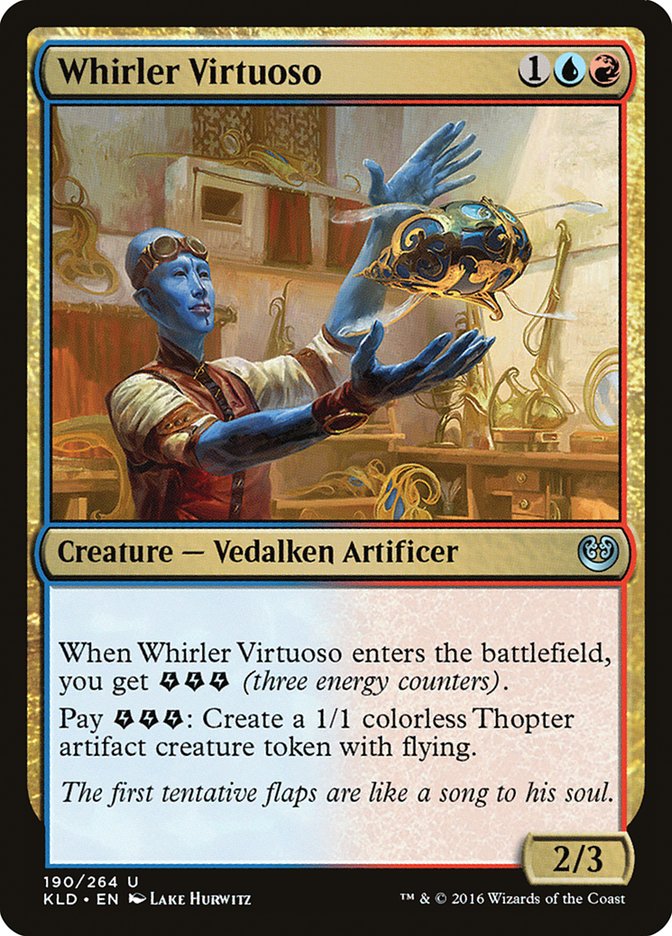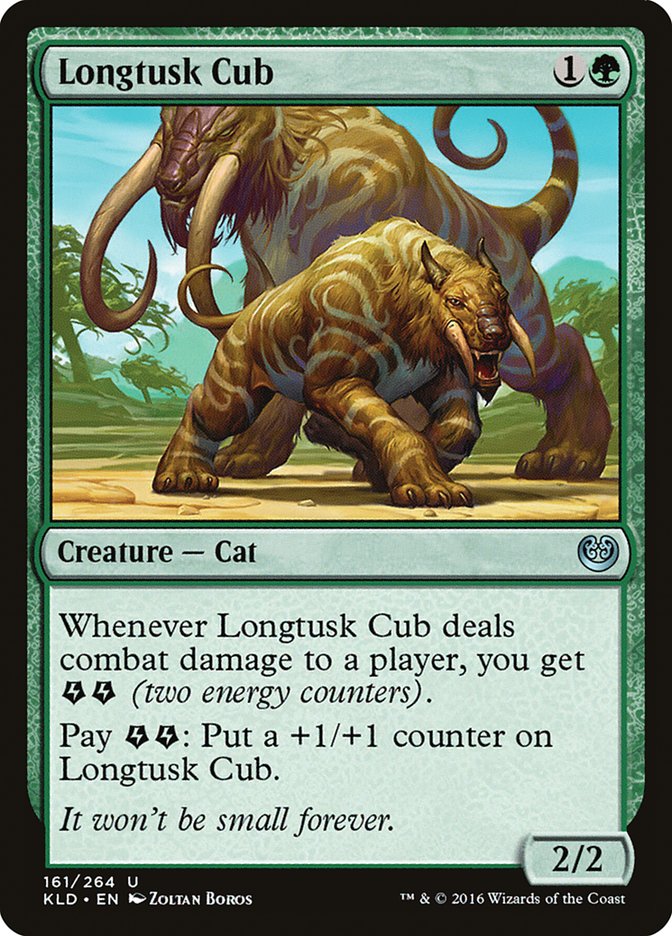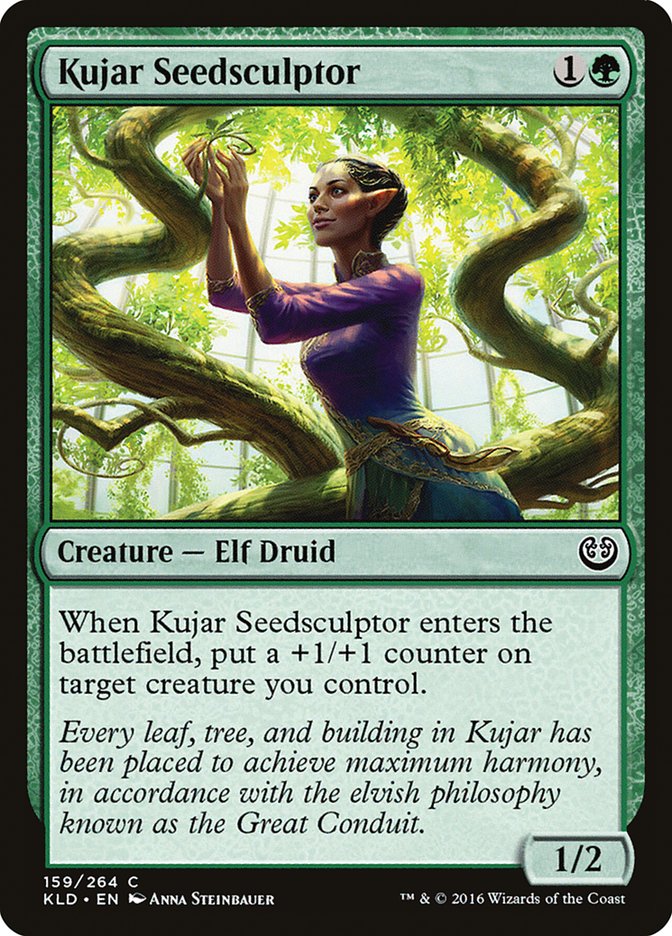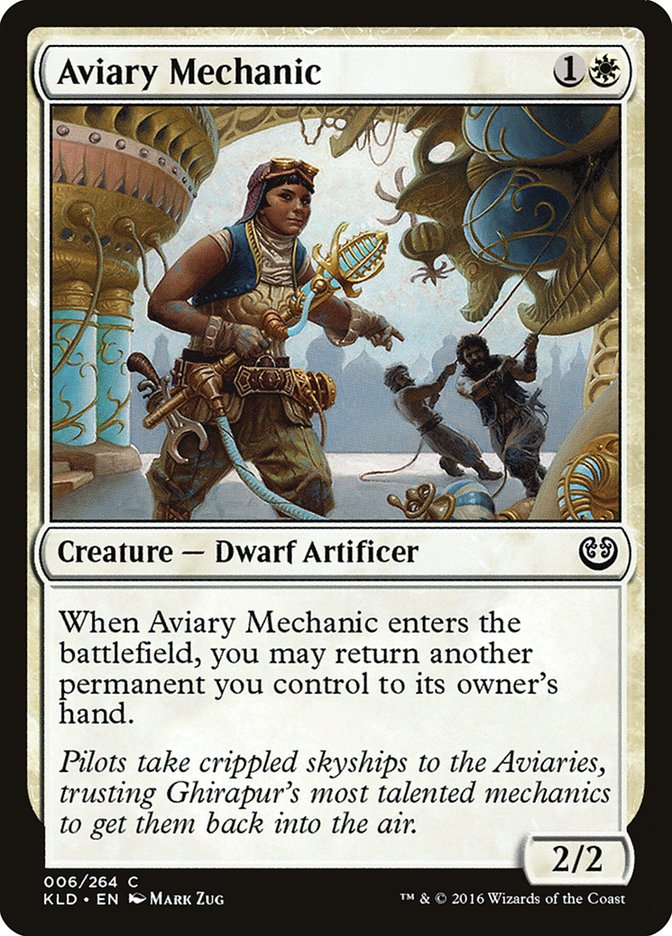Christmas came early this year. I moseyed on down to my local game store, Uncommons, and sat down for a draft. The draft was going well. I started off with Fabrication Module and moved into one of my favorite archetypes: Temur Energy. I was ecstatic with my deck before the end of Pack 2; I already had the Whirler Virtuoso, Decoction Module, and Era of Innovation combo! I cracked open my third pack, took a whiff of that fresh new pack smell, and flipped to the rare.
Oh my God, I did the thing!
I lived the dream. The combos were unreal. I didn’t lose a game that day. I beat Verdurous Gearhulk, Demon of Dark Schemes, and two copies of Aetherstorm Roc, yet the only rare in my entire deck was Animation Module.
How did I do it?
Flexibility. This is a fundamental concept that is much more important in Kaladesh Limited than other Limited sets. I don’t mean staying open in the draft, although that is part of it. I mean that you should draft a deck capable of being the aggressor and also capable of playing the controlling role.
For the deck mentioned above, if the game went too long, I would assemble a powerful combo and win. But I also had Renegade Freighter, Thriving Rhino, two copies of Voltaic Brawler, and Spontaneous Artist. I could out-race aggressive decks and out-grind control decks.
It’s very hard to create a deck that is both the best at attacking and the best at winning the long-game. I have had a lot of success in the current Limited format by drafting powerful decks with late-game combos and mana-sinks. It doesn’t matter whether you want to label these decks as control, aggro, or midrange; they can play every role, even if they play one exceptionally well.
Before I get into how to draft these decks, it is important to understand why they perform so well. Many players are still arguing about the speed of this format. Renowned players like Paulo Vito Damo da Rosa prefer aggro decks because the combat tricks are great and the creatures are best at attacking. But then other Hall-of-Famers like Luis Scott Vargas are winning Draft Leagues by activating Aetherflux Reservoir.
Both hyper-aggressive decks and extremely durdly control decks are viable. This creates a hostile format where, if the aggro deck is on the play and starts out of the gate, the control deck can’t keep up, but if the control deck can stabilize early, the game may end in ten turns, yet it is really over by turn 5.
When you draft a deck that, contrarily, can play both roles, you fight this type of environment. Get aggressive with your Dhund Operatives in your black control deck. If you can get attacking early on with your deck that will certainly win the long-game, your win percentage increases. Built to Smash and Maulfist Doorbuster are not going to get the job done on the defense.
When your opponent’s deck doesn’t abide by the flexibility that yours does, you’ll end up winning some games by playing the only role that their deck is capable of, even if that is not your Plan A.
This observation explains why I lean towards late-game decks over aggressive decks in Kaladesh Limited. They are much better at playing multiple roles than aggro decks by definition. Think about it this way. The first few turns of the game are always played; hence, every deck must have a plan to deploy for turns 1 through 5. Aggressive decks expect the game to be over after that and therefore don’t need to focus on more than the first few turns of the game.
So how am I drafting these flexible and powerful late-game decks? Here is a deck I drafted a couple of weeks ago:
Creatures (13)
- 1 Thriving Turtle
- 1 Thriving Rats
- 2 Contraband Kingpin
- 2 Aetherborn Marauder
- 2 Whirler Virtuoso
- 1 Bastion Mastodon
- 1 Prakhata Pillar-Bug
- 1 Consulate Skygate
- 1 Minister of Inquiries
- 1 Gearseeker Serpent
Lands (16)
- 7 Swamp
- 1 Mountain
- 7 Island
- 1 Aether Hub
Spells (11)

Why is this deck so good? There are plenty of answers and threats. Two copies of Aetherborn Marauder, two copies of Whirler Virtuoso, and a Gearseeker Serpent mean that, come a stall, I will be able to attack. Combine that with removal and blockers in two copies of Contraband Kingpin, and creating an environment where my opponent cannot attack is pretty easy. But that’s no different from any good controlling deck you’ve probably drafted so far.
Take a second to look at the deck. Have you figured it out yet? What is the difference between this deck and the last control deck you drafted?
Give up?
Okay, I’ll tell you: the curve! There are only five spells in the entire deck that cost more than three mana.
The Curve
One thing that I have been doing differently in Kaladesh is placing an extreme focus on a low curve, even for controlling decks. I employ a technique used for drafting in Cube: if you’re deciding between two cards, take the one with the cheaper converted mana cost. This has led me to some interesting questions. For example, which card is better, Dhund Operative or Tidy Conclusion? The general consensus is that Tidy Conclusion is the superior card. I am starting to question this.
Looking at both cards, they both go in every black deck. Removal and two-drops are always at a premium in Limited. Both are fine, but unexciting without artifacts (although the removal spell is better here). With artifacts, both cards become very powerful. I have gained eight life off a Tidy Conclusion before, although on average it gains about two life.
In my experience, Dhund Operative is almost always a two-mana 3/2 with deathtouch. That card is great on both offense and defense. Combine that with the fact that it’s three mana cheaper than Tidy Conclusion, and I think the two-drop really gives the removal spell a run for its money here!
The thing is, in most Limited formats, you are supposed to lean on the side of power and take the removal spell in this situation because you will have less opportunity later in the draft. But most formats don’t have Renegade Freighter. There really aren’t that many efficient two-drops. Because hyper-aggressive decks not only exist but are good, it is extremely important to have a lot of early-game interaction. Turn 5 might not be good enough.
You shouldn’t always sacrifice power for curve, but don’t just glaze over that two-drop because there is a more powerful card.
The Power
Powerful cards are important in Limited. They expedite your win. They help come back from behind. They are cards that you need. Although plenty of them are rare, that would be a pointless focus, since the bread and butter of Limited are commons and uncommons.
Gearseeker Serpent is extremely powerful if you cast it on turn 4 and still very good afterwards. Whirler Virtuoso is a bomb when you combine it with enough energy.
You’ll notice that the past two decks I mentioned didn’t have much in the rare camp, yet they were still powerful. Let’s continue that trend with another deck that I piloted last week:
Creatures (13)
- 1 Longtusk Cub
- 1 Arborback Stomper
- 1 Thriving Turtle
- 1 Thriving Rhino
- 1 Whirler Virtuoso
- 1 Wild Wanderer
- 1 Servant of the Conduit
- 2 Aether Theorist
- 2 Riparian Tiger
- 1 Peema Outrider
- 1 Empyreal Voyager
Lands (16)
Spells (11)

This deck also abides by everything I’ve mentioned. The curve of the deck is fairly low. It has an incredibly powerful late-game but can also just cast Servant of the Conduit into Peema Outrider and beat down.
The important thing to note about power is the distinction between “generally powerful” and “synergistically powerful.” Arborback Stomper is always powerful, where Shrewd Negotiation requires the proper assortment of cards.
The best way to consider power while drafting is looking at the risk versus the reward. Arborback Stomper is often a first pick. It is extremely efficient and good on its own. Here the reward is high and the risk is completely null. Shrewd Negotiation is not as high of a pick, yet a more powerful card. The difference is that Shrewd Negotiation doesn’t always make your deck. You need some artifacts that you don’t mind exchanging.
It is important to understand when the risk outweighs the reward. When do you actually try to make Dynavolt Tower work? It isn’t often. The risk of playing a card that does almost nothing is quite high. But it was one of the best cards in the deck above! The entire point of this evaluation leads to one conclusion: mitigate the risk of powerful cards. The more energy cards you take, the better Dynavolt Tower gets because you are lessening the risk it comes with.
It just so happens that, in Kaladesh Limited, a lot of these powerful cards combine with others to create nearly unbeatable situations. If you’ve ever had two or more of the Modules on the battlefield, the incremental advantage is quite impressive. Whirler Virtuoso and Era of Innovation, which have been in all three of the example decks, combine to create a clone of the Sword of the Meek and Thopter Foundry combo!
These two card combos and synergies lead me to prioritize cards that have the potential for high power in Pack 1. The chance that I run into one of the other synergistically powerful cards in the rest of the draft is high enough that the risk is lower.
Also, I often find myself with cards in my sideboard that I would be happy to maindeck, should I have room. This in itself mitigates the risk of taking Era of Innovation early in Pack 1. The downside of not playing the card you could have taken instead is not as high as the upside of drafting a Whirler Virtuoso and having the Era of Innovation to go along with it!
Draft these powerful cards higher than you do. Build around them. It’ll be well worth it!
The Balance
Now that I’ve covered the importance of flexibility, curve, and power, how do you prioritize each of these? When have you covered enough of your curve? When do you have enough top-end?
Try your best to be aware of all three and make sure none are missing by the time you get to Pack 3. But there is a way to prevent this while simultaneously optimizing flexibility, curve, and power. Evaluate cards under those three cases! For example, let’s look at the best uncommon in the set: Longtusk Cub.
This card is best on turn 2, as it can take over the game if left unchecked. But late in the game it is rarely irrelevant, as you often have some energy lying around. This card is flexible, cheap, and powerful, and to fairly high degrees! It makes sense as to why Longtusk Cub is regarded as the best uncommon.
If you begin to prioritize cards that fulfill multiple roles, your deck will naturally have a good balance of the three. This is what makes a great late-game powerful deck.
There aren’t going to be too many cards that fit in all three camps, but plenty fit in two. Usually efficient two-drops are both flexible and cheap. Dhund Operative, Kujar Seedsculptor, and Aviary Mechanic are all great for that reason!
So the general heuristic I can offer is to take cards that accomplish all three goals extremely highly, and take those that are successful at two higher than those good at only one. Once you’re comparing cards that don’t overlap, it’ll be deck-dependent. Do you need the late-game bomb or a two-drop? I can’t tell you that. But up until that point, you can make sure you have what you need to create a deck that combines flexibility, a low curve, and power!
Hopefully I’ve rekindled your desire to draft this format until Aether Revolt is released. You can draft some pretty busted decks without much effort if you know what to look for and prioritize. So go to your local store today for Friday Night Magic, draft a powerful late-game deck, and reap the rewards!


